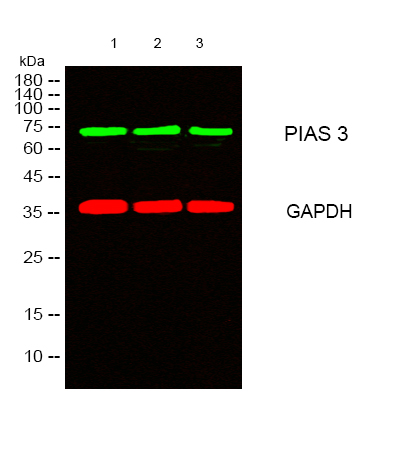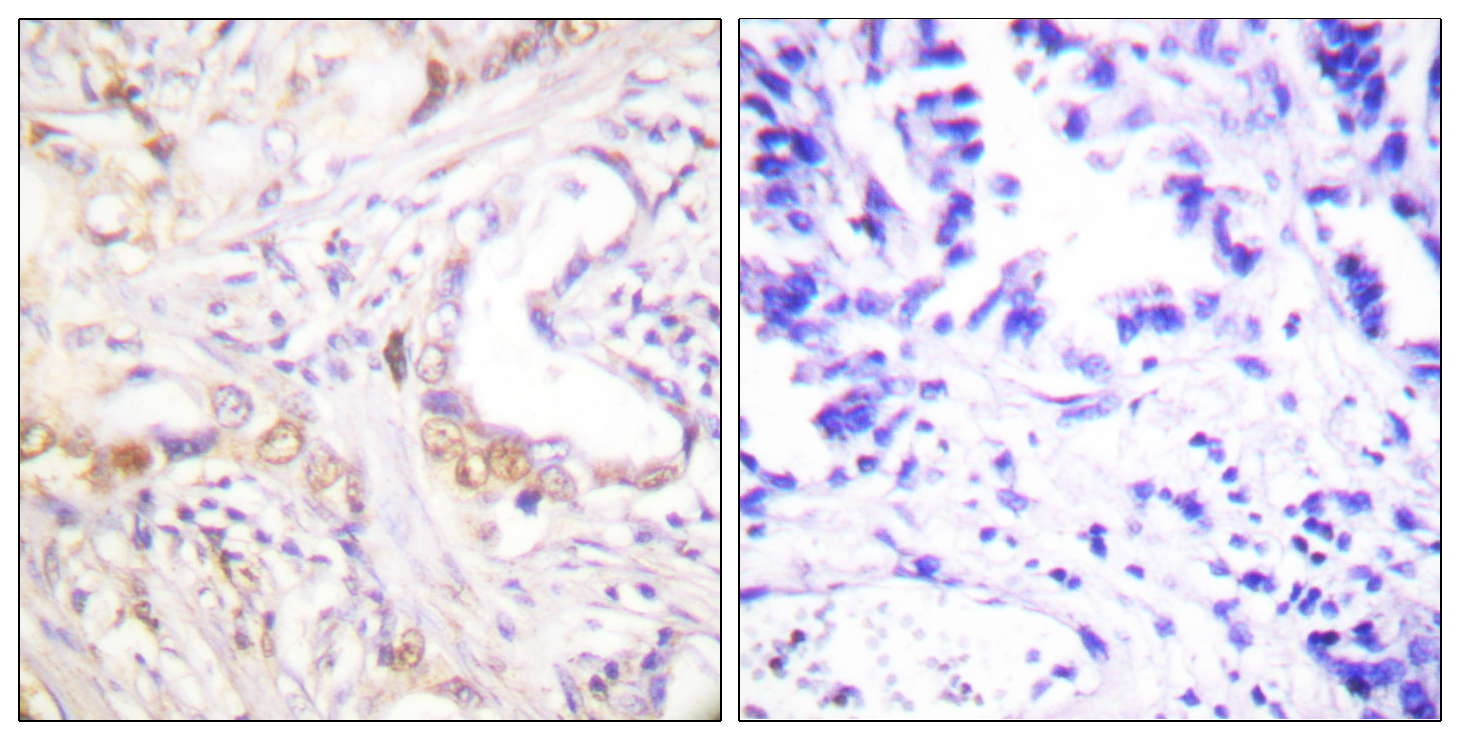PIAS 3 Polyclonal Antibody
- 货号:YT3718
- 应用:WB;IHC;IF;ELISA
- 种属:Human;Mouse;Rat
- 简介:
- >>Ubiquitin mediated proteolysis;>>JAK-STAT signaling pathway
- 蛋白名称:
- E3 SUMO-protein ligase PIAS3
- 免疫原:
- The antiserum was produced against synthesized peptide derived from human PIAS3. AA range:10-59
- 特异性:
- PIAS 3 Polyclonal Antibody detects endogenous levels of PIAS 3 protein.
- 组成:
- Liquid in PBS containing 50% glycerol, 0.5% BSA and 0.02% sodium azide.
- 来源:
- Polyclonal, Rabbit,IgG
- 稀释:
- WB 1:500 - 1:2000. IHC 1:100 - 1:300. ELISA: 1:10000.. IF 1:50-200
- 纯化工艺:
- The antibody was affinity-purified from rabbit antiserum by affinity-chromatography using epitope-specific immunogen.
- 储存:
- -15°C to -25°C/1 year(Do not lower than -25°C)
- 其他名称:
- PIAS3;E3 SUMO-protein ligase PIAS3;Protein inhibitor of activated STAT protein 3
- 背景:
- This gene encodes a member of the PIAS [protein inhibitor of activated STAT (signal transducer and activator of transcription)] family of transcriptional modulators. The protein functions as a SUMO (small ubiquitin-like modifier)-E3 ligase which catalyzes the covalent attachment of a SUMO protein to specific target substrates. It directly binds to several transcription factors and either blocks or enhances their activity. Alternatively spliced transcript variants of this gene have been identified, but the full-length nature of some of these variants has not been determined. [provided by RefSeq, Jul 2008],
- 功能:
- domain:The LXXLL motif is a transcriptional coregulator signature.,function:Functions as an E3-type small ubiquitin-like modifier (SUMO) ligase, stabilizing the interaction between UBE2I and the substrate, and as a SUMO-tethering factor. Plays a crucial role as a transcriptional coregulation in various cellular pathways, including the STAT pathway and the steroid hormone signaling pathway. The effects of this transcriptional coregulation, transactivation or silencing, may vary depending upon the biological context.,induction:By dihydrotestosterone in prostate cancer cells.,pathway:Protein modification; protein sumoylation.,PTM:Sumoylated.,similarity:Belongs to the PIAS family.,similarity:Contains 1 SAP domain.,similarity:Contains 1 SP-RING-type zinc finger.,subunit:Binds SUMO1 and UBE2I. Interacts with AR, GFI1, HMGA2, IRF1, MITF, NCOA2, as well as with STAT3, after treatment with IL6, C
- 细胞定位:
- Cytoplasm . Nucleus . Nucleus speckle . Colocalizes with MITF in the nucleus. Colocalizes with GFI1 in nuclear dots. Colocalizes with SUMO1 in nuclear granules. .

- Western blot analysis of lysates from 1)293 , 2) Rat kidney, 3) HELA cells, (Green) primary antibody was diluted at 1:1000, 4°over night, secondary antibody(cat:RS23920)was diluted at 1:10000, 37° 1hour. (Red) GAPDH Monoclonal Antibody(2B8) (cat:YM3029) antibody was diluted at 1:5000 as loading control, 4° over night,secondary antibody(cat:RS23710)was diluted at 1:10000, 37° 1hour.
.jpg)
- Western Blot analysis of 293 cells using PIAS 3 Polyclonal Antibody diluted at 1:2000 cells nucleus extracted by Minute TM Cytoplasmic and Nuclear Fractionation kit (SC-003,Inventbiotech,MN,USA).

- Immunohistochemistry analysis of paraffin-embedded human lung carcinoma tissue, using PIAS3 Antibody. The picture on the right is blocked with the synthesized peptide.

.jpg)




